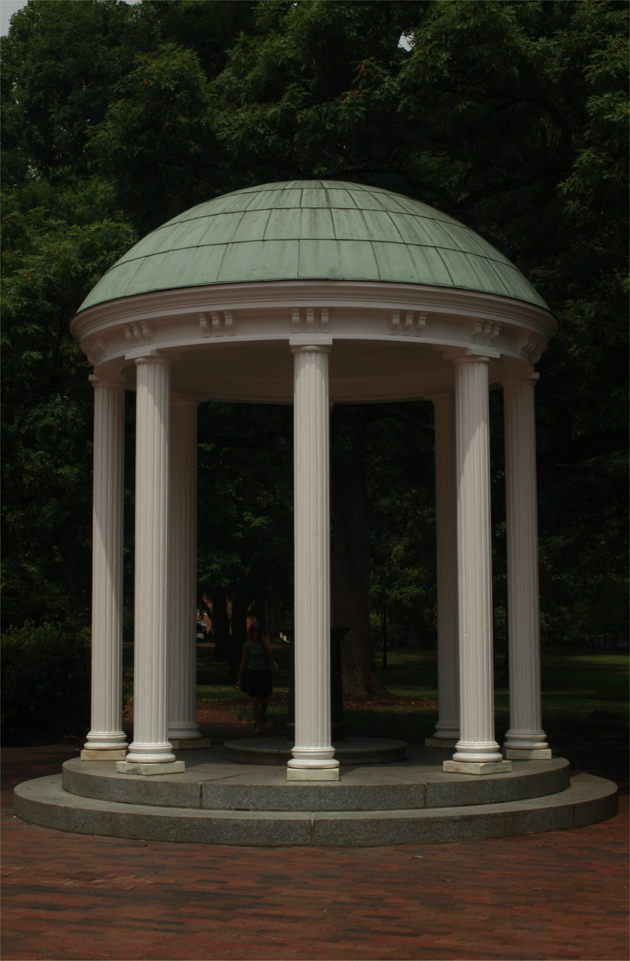Publisher's note: Duke Cheston is a reporter and writer for the John W. Pope Center for Higher Education Policy (popecenter.org). His article here appeared in the Carolina Journal.
Empty classrooms could boost cost of college to students
RALEIGH If you ever have been on a college campus for an entire school day, you may have noticed something odd: The school never seems full. There are empty classrooms, even at the busiest times.
It's not just your imagination. Colleges really do leave many classrooms unused throughout the day. During an average hour of the school day at UNC-Chapel Hill, for example, less than two-fifths of the school's classrooms -- only 37 percent in Fall 2011, the latest figures available -- are being used. Even at times of peak classroom use, more than a quarter of usable classrooms sit empty.
UNC-Chapel Hill is hardly alone. According to Tom Shaver, CEO of Ad Astra Information Systems, a higher education consulting group that specializes in facilities management, the industry average for the percentage of classrooms occupied throughout the school week (Monday through Friday, 8:00 a.m. to 10:00 p.m.) is 49 percent.
That puts UNC-Chapel Hill's classroom use efficiency below average, but not by much.
The 17 schools in the University of North Carolina system had an average classroom occupancy of 44 percent in 2009, according to a 2010 study by the system. According to a different study by the UNC administration, its Facilities Inventory and Utilization Study 2011, North Carolina's community colleges do even worse: the average classroom was used only 18.4 hours per week, or 26 percent of the standard school week. (Four private colleges in the state -- Campbell, Mars Hill, Barton, and Pfeiffer -- also were part of the study, and they averaged 23 percent classroom usage in 2011).
 The Old Well on the University of North Carolina Campus in Chapel Hill: Above. photo by Stan Deatherage
The Old Well on the University of North Carolina Campus in Chapel Hill: Above. photo by Stan Deatherage
This suggests that costs are higher than necessary. The average American university spends $2,073 per student per year on building maintenance costs, according to the American Physical Plant Association. The savings that could be realized from more efficient classroom use are substantial. Western Kentucky University, for instance, was able to save more than $345,000 during the summer months alone by making some improvements in classroom use, including temporarily closing energy-inefficient buildings.
In some ways, universities' apparent poor use of space is the opposite of what one would expect. Colleges have the ability to schedule classes throughout the day and evening, and prestigious universities like UNC-Chapel Hill have no difficulty finding enough students willing to fill classes. Why then do colleges leave so many rooms empty?
Some observers have suggested, based on the pattern of classroom use through the day, that colleges simply give in to the desires of students and professors to sleep late and go home early. At Appalachian State University, for example, 80 percent of classrooms were used during the 11:00 a.m. hour, but only 31 percent were in use at 8:00 a.m., and the evening hours had much lower usage rates.
There may be some truth to that, but other factors, such as limited availability of large classrooms or technologically sophisticated classrooms, also make efficient space use difficult.
A number of schools have tried using market forces to improve space utilization through what's called a "space charge" program. Basically, instead of paying for facility construction and maintenance from a central fund, each academic department receives an allocation of money to pay for the classroom space it uses. By charging departments more to use classrooms at peak use hours, colleges can discourage bottlenecking and produce a more even distribution of classes throughout the day.
Space charge programs can be found on campuses in Australia, New Zealand, and England, but the space charge idea has been slow to catch on in the United States.
At the few American universities where space charge programs have been implemented, including Johns Hopkins University, the University of Michigan, and Stanford University, the idea has had limited success. At Stanford, space utilization improved 4.5 percent overall and one department improved utilization by 15 percent (according to a May 2011 report by University of California-Los Angeles administrators exploring space-saving techniques).
Another suggestion for improved space use on campus is changing the traditional two-semester-per-year system. By abandoning the old agrarian-era schedule with several months off in the summer, colleges could make better use of their buildings. In an article for the Pope Center earlier this year, Jane S. Shaw praised Brigham Young University-Idaho for making such a change, but noted that BYU-Idaho was one of the few schools doing so.
Making better use of space isn't very popular. It might force students or faculty to wake up early or stay late on campus and it might even force students to give up their summer vacations. But if college costs keep rising, it may become necessary.
Duke Cheston is a writer for the John W. Pope Center for Higher Education Policy and a contributor to Carolina Journal.

